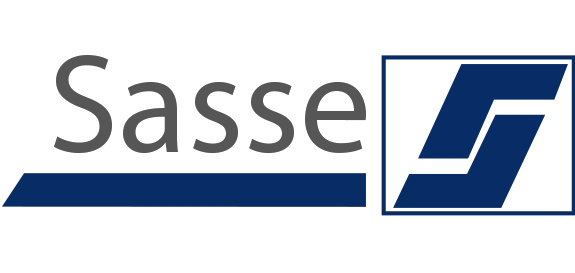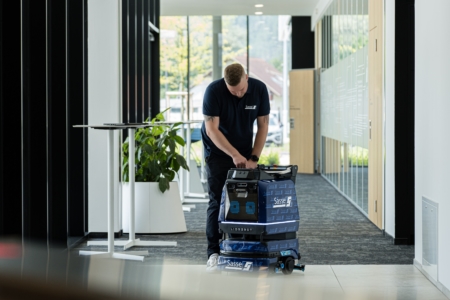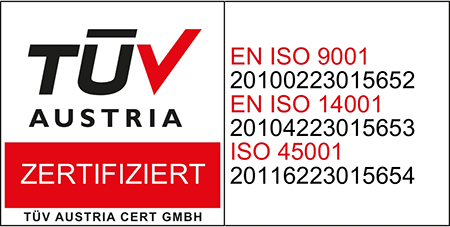ROBOTS PAVING THE WAY TO SMART CLEANING
Airports are a melting pot for high-tech and innovation. Not only in the jets that stand at the “finger” and reach the whole world from there. The world is also changing at jet speed in terms of service. As a result, airlines and passengers are becoming more demanding when it comes to the quality of their service providers. But the holistic achievement of the 4.0 level is also required in industry. FM plays a key role in this, not least because the use of cleaning robots brings with it the departure into a new dimension.
“Innovations and new technologies are at the top of the list for the Dr. Sasse Group when it comes to constantly improving and digitalising our services,” says Philipp Pfeifer, Technical Property Manager at Sasse Austria. “From my point of view, cleaning robots mean for our work what the entry into the jet age once meant for aviation and the automation of production in industry. Because in the long term they will take over a large number of the cleaning tasks and thus bring about change on a large scale.”
Where can you already see this happening? As things stand today, robots are particularly exciting and helpful in floor, facade and window cleaning. However: autonomous machines are by no means self-sufficient. It is important to know for which customers their use makes economic sense and which surfaces are suitable for their application.
At a customer of Sasse Group in Styria, a leading global manufacturer of high-quality printed circuit boards and IC substrates, the robots used in FM, Co-botic 1700 Pro and the Lionsbot R3 Scrub, are already proving themselves on the factory floor. Both are so usable in terms of their performance characteristics that they have long since left experimental status behind and can be used in standard operations.
Depending on the specification of the robots and the characteristics of the object, e.g. the surfaces to be cleaned, each model plays to its individual strengths. For carpeted areas, narrow corridors or offices, the Co-botic is best suited with its suction functions. There it can do its work more or less autonomously over a longer period of time. On large areas with industrial or hard floors, the R3 Scrub shows its strengths “in the area”. It can be operated with a docking station. This automatically empties the dirty water, fills the robot with clean fresh water and also charges the battery. Mapping is worth particular attention here. Because, says Pfeifer, “the robot will only function as efficiently and smoothly as the map has been programmed”. During the first, manual traversal of a selected area, the machine records the floor plan of the room and learns critical areas, for example, so as not to take flight outside in the case of automatic sliding doors.
The continuous learning process is supported by intelligent systems “on board” and leads us to expect significant progress through AI. Pfeifer’s experience shows: The larger the area, the more efficiently and economically the robot can be used, especially when it replaces manual cleaning work. This feature benefits the teams deployed, not least where tedious night work was previously necessary – and where the skills of the skilled workers can be called upon more efficiently for other tasks.
Likewise, the degree of soiling of the surfaces and a clean look of the sensors deserve special attention from the human who controls the robots. Cleaning robots are usually designed for regular cleaning and light soiling. Industrial halls with welding dust or even metal chips will considerably reduce the service life of the brushes as well as other components.
Pfeifer summarises the strongest advantages he can name from his experience like this:
Time saving: Floor cleaning robots can effectively clean large areas in a short time, saving time and resources. The R3 Scrub, for example, achieves a cleaning performance of up to 1,800m² per hour.
Efficiency: Robots are programmed to perform their cleaning tasks precisely and can therefore achieve higher cleaning efficiency than humans.
Autonomy: Robots can work semi-autonomously, and in some cases already fully autonomously. At service stations with connections to electricity, water and waste water, they receive what they need for the next tasks. Through IoT solutions, the R 3 Scrub, for example, can be connected to lifts or electric doors and operate on different floors.
Consistency: Floor cleaning robots clean floors consistently and thoroughly, resulting in a uniform and clean appearance.
Reduction of cleaning agents: Consumption of cleaning agents and fresh water decreases, resulting in cost savings and a reduced environmental footprint.
Data analysis: Our deployed models, Co-botic1700 Pro and Lionsbot R3 Scrub can collect and analyse data to ensure better cleaning efficiency and identify potential problems.
Cost advantage: Robots already clean floors in certain areas more cheaply than humans.
Growth despite a shortage of skilled workers: The use of robots can relieve human cleaners of repetitive and less demanding tasks. In return, they are freed up to take on other, often more demanding tasks in the same property or in other properties.
His final conclusion: “I personally see great potential in robotics. That’s why I will continue to use the know-how I have already gathered to try to push the issue with our existing customers as well as with new customers.”




